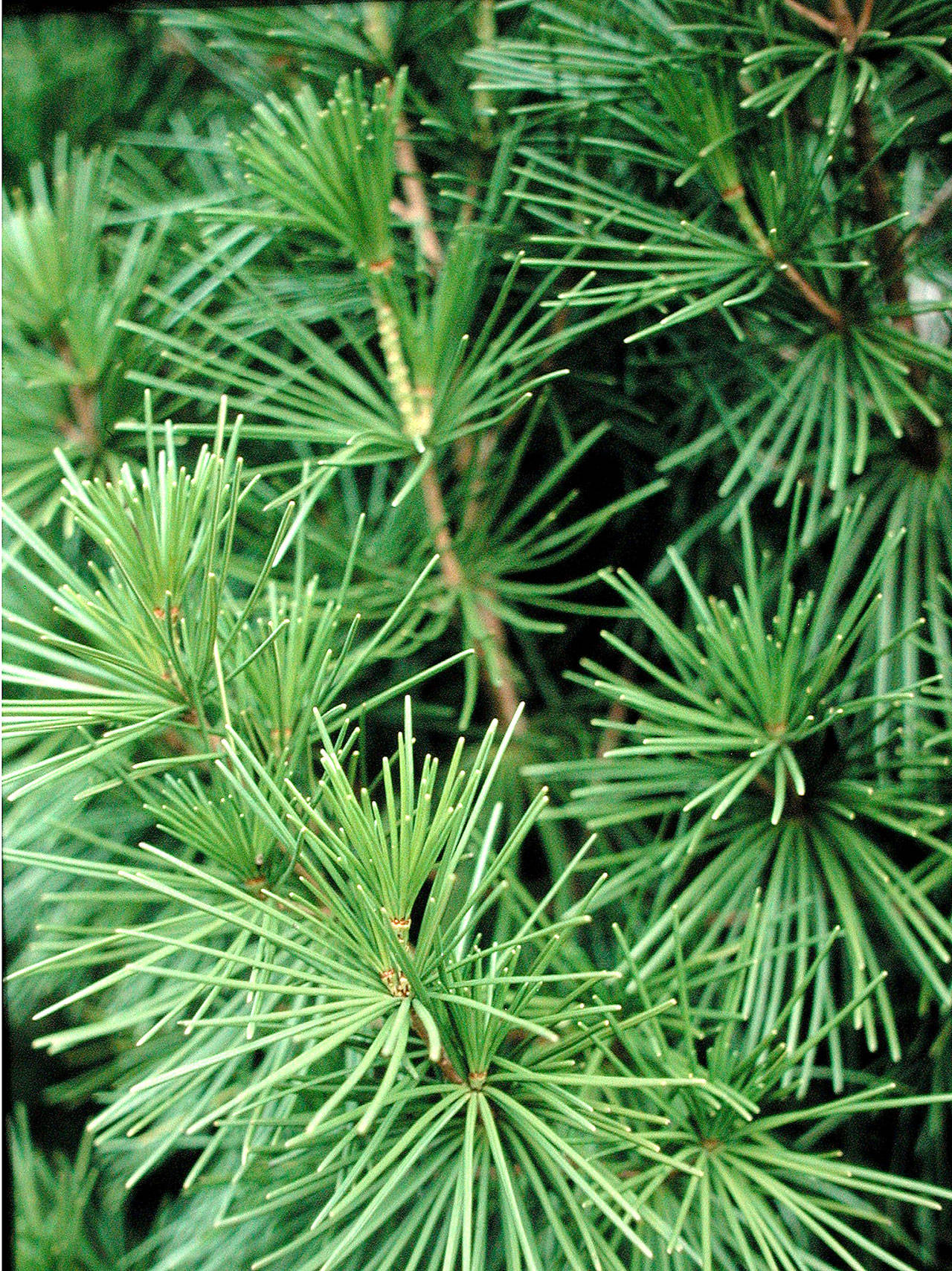What: The thick, dark green needles of Sciadopitys verticillata are held like the ribs of an umbrella around its stems, giving it a unique appearance. It is very slow-growing and columnar in shape, which makes it suitable for small gardens. Japanese umbrella pine (or parasol pine) creates an eye-catching accent in the landscape. Despite its common name, this is not a true pine (genus Pinus). Like the dawn redwood, Sciadopitys was once widespread, even growing in Europe, where it is seen in the fossil record. Due to climate changes and competition, its native range was reduced to a few towns in central Honshu, Japan. However, it has been grown around monasteries in Japan for centuries. This species is the only one in the genus.
Where: This unusual evergreen conifer grows well in full sun to light or open shade. It prefers a well-drained or sandy soil, but will tolerate clay if the drainage is adequate.
Size: Japanese umbrella pine grows to be 30 feet tall with a span of 10 feet when mature.
Care: Once established, Japanese umbrella pine is drought tolerant, but young plants appreciate occasional watering during dry weather. Very little pruning is necessary, only remove dead, broken or poorly formed branches.
— Richie Steffen, Great Plant Picks
Talk to us
> Give us your news tips.
> Send us a letter to the editor.
> More Herald contact information.

























